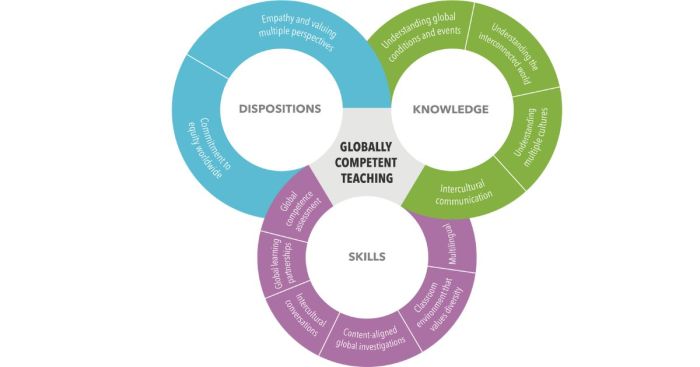A shortcoming of behavioral therapy from a diversity perspective is its limited consideration of cultural and individual factors that influence behavioral responses. This essay delves into the challenges and opportunities of adapting behavioral therapy to diverse populations, emphasizing the importance of cultural sensitivity and the incorporation of cultural factors into therapeutic interventions.
Behavioral therapy, with its focus on observable behaviors, may overlook underlying cultural and social factors that shape behavior. Cultural norms, values, and beliefs can conflict with behavioral interventions, leading to a mismatch between therapeutic goals and the client’s cultural context.
Understanding Behavioral Therapy from a Diversity Perspective

Behavioral therapy, a form of psychotherapy, focuses on observable behaviors and their relationship with environmental stimuli. It assumes that behaviors are learned and can be modified through conditioning and reinforcement.
Cultural and individual factors significantly influence behavioral responses. Culture shapes values, beliefs, and norms, which in turn affect how individuals perceive and respond to their environment. Individual factors, such as personality traits and life experiences, also play a role in shaping behavioral patterns.
How Diversity Impacts Behavioral Therapy
- Cultural Differences in Reinforcement:Different cultures may have different values and beliefs about what constitutes desirable behaviors, which can affect the effectiveness of reinforcement strategies.
- Variations in Behavioral Patterns:Cultural norms and expectations can influence the frequency and intensity of certain behaviors, leading to variations in behavioral responses across different cultural groups.
- Language Barriers:Language differences can hinder communication and understanding during behavioral therapy, making it difficult to establish a strong therapeutic relationship and implement interventions effectively.
Limitations of Behavioral Therapy in Addressing Diversity

Shortcomings in Addressing Underlying Factors
Behavioral therapy’s focus on observable behaviors may overlook underlying cultural and social factors that contribute to behavioral problems. This can lead to interventions that address only surface-level issues and fail to address the root causes of the behavior.
Cultural Norms and Values in Conflict
Cultural norms and values can sometimes conflict with behavioral interventions. For example, in some cultures, it may be considered disrespectful to directly confront others, which can make it difficult to implement behavioral techniques that involve direct feedback or confrontation.
Cultural Sensitivity and Adapting Behavioral Therapy: A Shortcoming Of Behavioral Therapy From A Diversity Perspective Is

Importance of Cultural Sensitivity
Cultural sensitivity is crucial in behavioral therapy to ensure that interventions are tailored to the specific needs and values of diverse populations. It involves understanding the cultural context of the client, respecting their beliefs and values, and adapting techniques accordingly.
Strategies for Adaptation, A shortcoming of behavioral therapy from a diversity perspective is
- Incorporating Cultural Values:Adapt behavioral interventions to align with the cultural values and beliefs of the client.
- Using Culturally Relevant Materials:Utilize materials and examples that are familiar and meaningful to the client’s cultural background.
- Training Therapists in Cultural Sensitivity:Provide therapists with training on cultural sensitivity and diversity awareness.
Case Studies and Best Practices

Challenges and Successes
Case studies demonstrate the challenges and successes of using behavioral therapy with diverse populations. For instance, a study with Hispanic youth found that a culturally adapted behavioral intervention was more effective in reducing depression than a traditional behavioral therapy approach.
Best Practices
- Establish a Strong Therapeutic Relationship:Build trust and rapport with clients by understanding their cultural background and respecting their values.
- Use Culturally Sensitive Techniques:Adapt behavioral techniques to align with the client’s cultural context, such as using storytelling or group discussions.
- Involve Family and Community:Engage family members and community resources to provide support and reinforce behavioral changes.
Question Bank
How does cultural diversity impact the effectiveness of behavioral therapy?
Cultural norms, values, and beliefs can influence behavioral responses, potentially affecting the applicability and effectiveness of behavioral interventions designed for a specific cultural context.
What are the challenges of using behavioral therapy with diverse populations?
Behavioral therapy’s focus on observable behaviors may overlook underlying cultural and social factors that shape behavior, leading to a mismatch between therapeutic goals and the client’s cultural context.
How can behavioral therapy be adapted to diverse populations?
Cultural sensitivity is crucial. Therapists can adapt behavioral therapy techniques by incorporating cultural values, beliefs, and practices into the therapeutic process, enhancing its effectiveness and promoting positive outcomes for clients from diverse backgrounds.